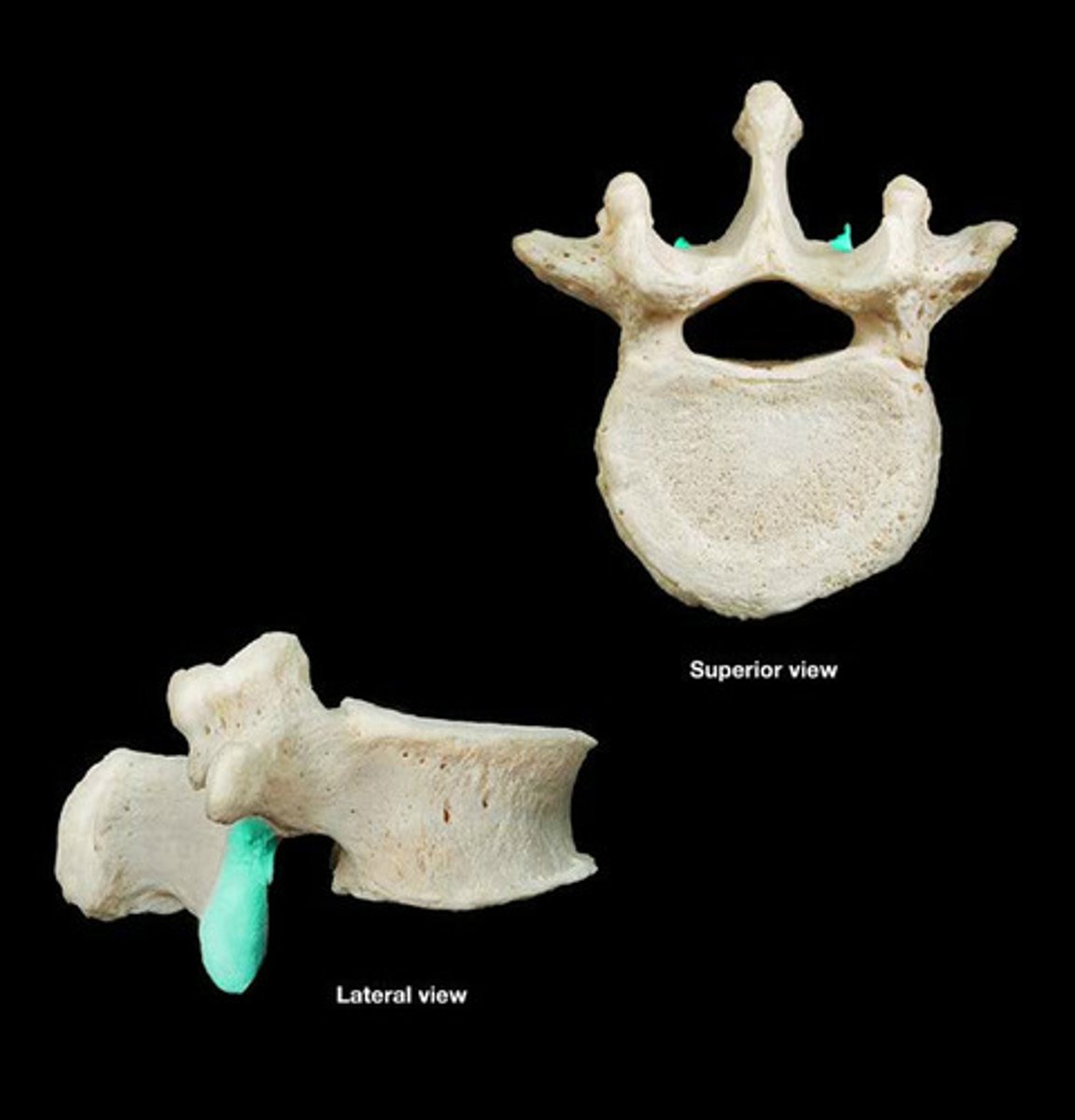Joints and ligaments of the vertebral column
1/16
There's no tags or description
Looks like no tags are added yet.
Name | Mastery | Learn | Test | Matching | Spaced |
|---|
No study sessions yet.
17 Terms
Anterior longitudinal ligament
This ligament lies on the anterior aspect of the vertebral body, extending all the way up and down the spine from the occipital bone to the sacrum.
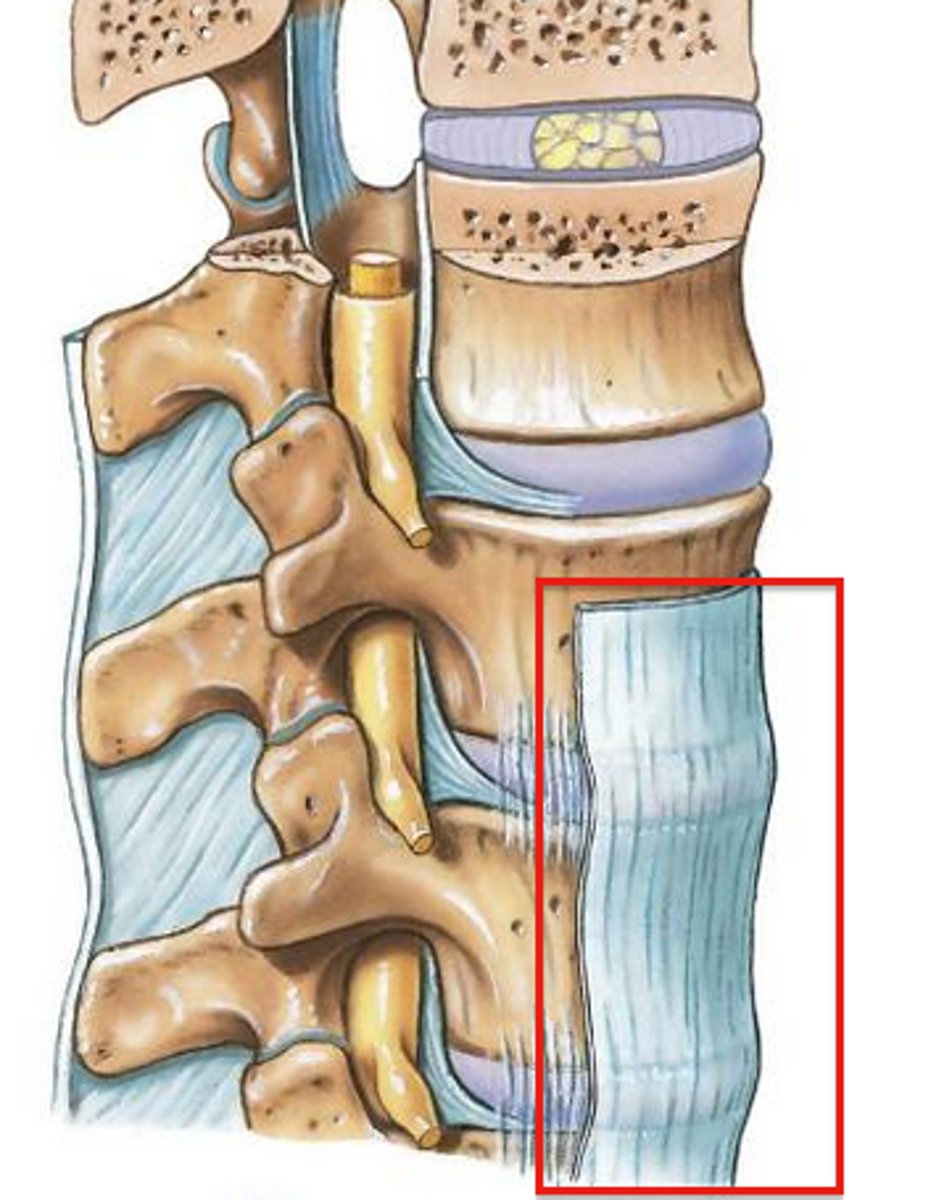
Posterior longitudinal ligament
This ligament sits on the posterior surface of the vertebral body in the vertebral foramen. Again it runs the entire length of the vertebral column, terminating at the sacrum and C2 vertebrae, where it extends upward to attach to the base of the skull, this is now called the TECTORIAL MEMBRANE.
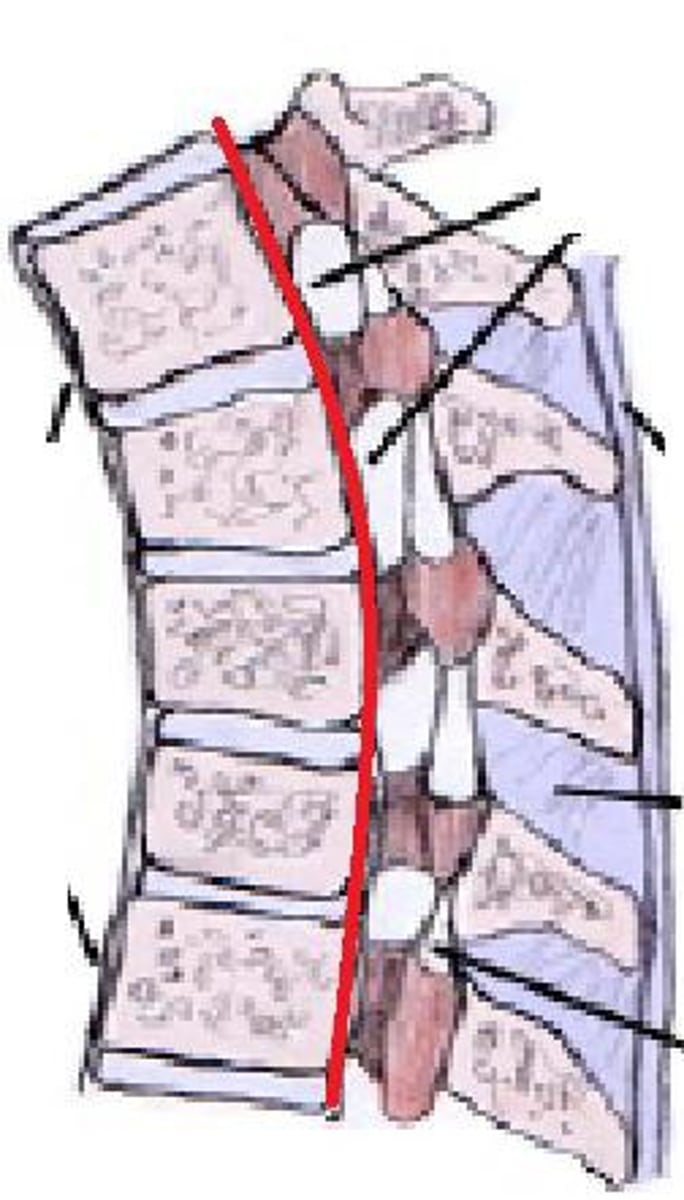
Ligamentum flavum
These ligaments connect the laminae of each vertebrae and form part of the posterior surface of the vertebral canal. It runs from the anterior part of the lamina superiorly to the posterior aspect of the inferior vertebrae's lamina. It resists separation of the laminae during flexion of the spine.
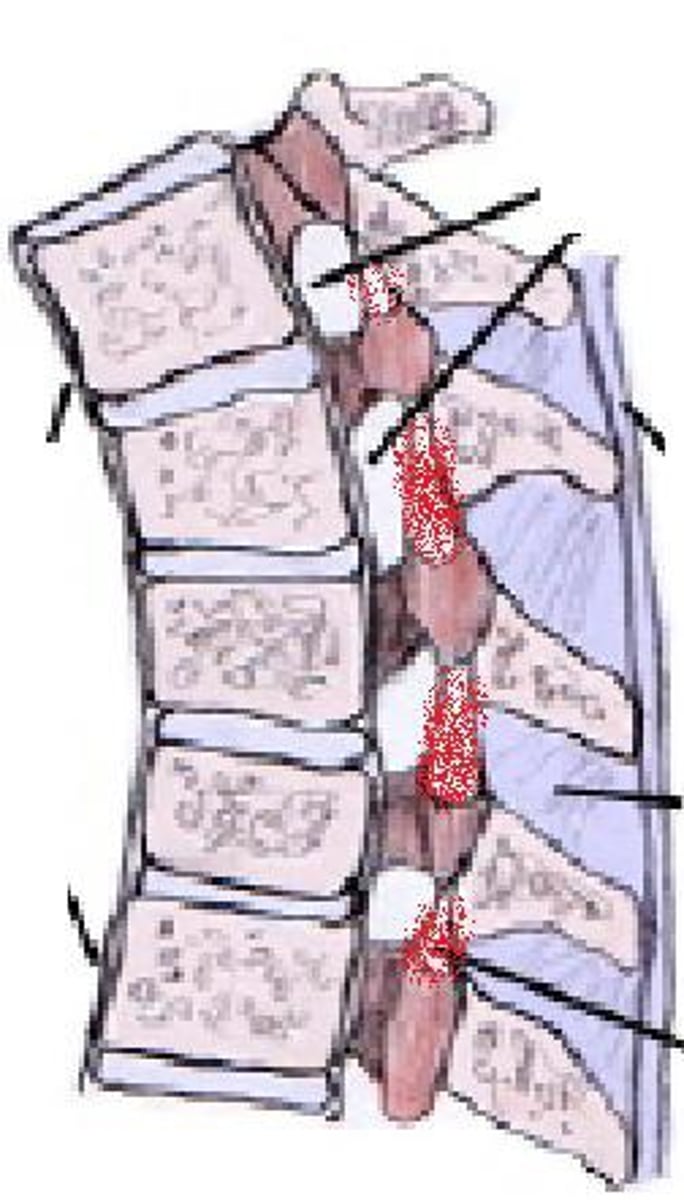
Interspinous ligament
These ligaments connect the spinous processes of the vertebrae. They blend with the ligamentum flava anteriorly and the supraspinous ligament posteriorly
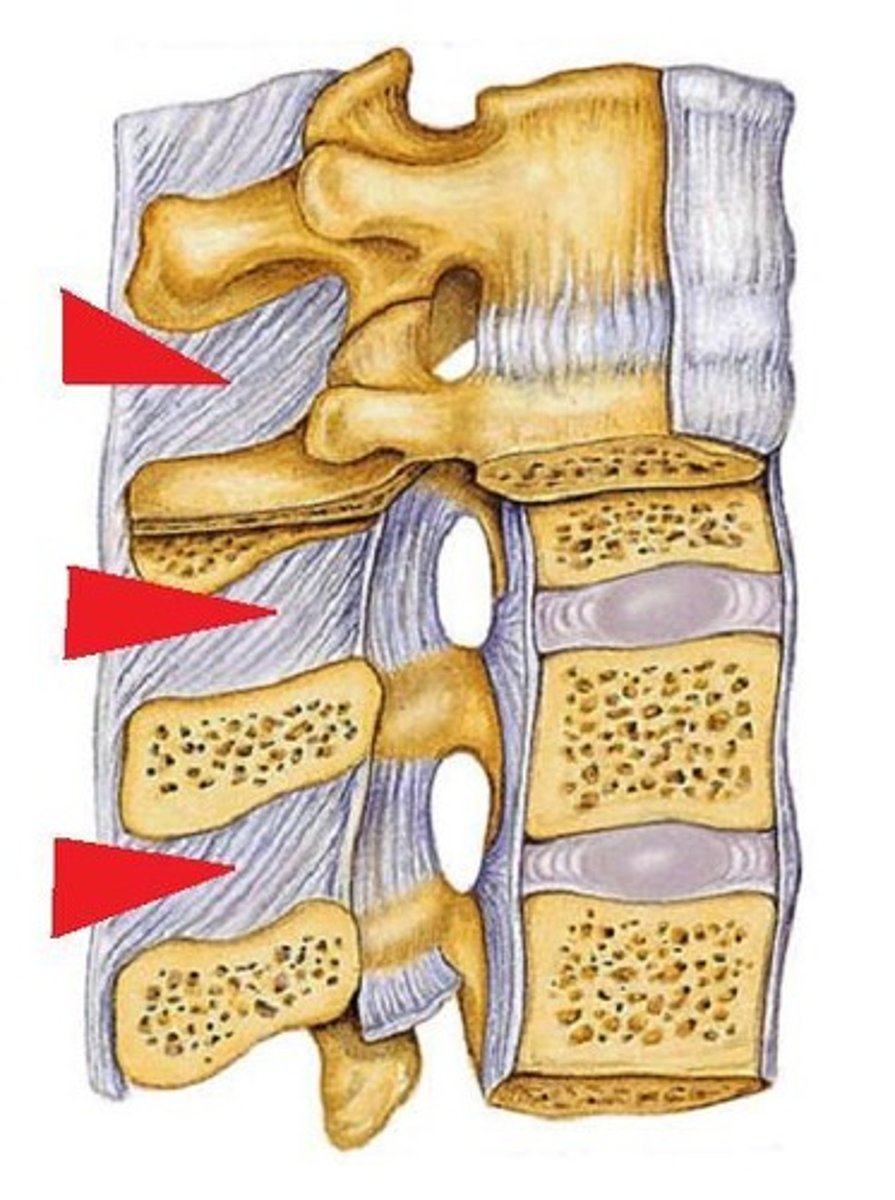
Supraspinous ligament
This ligament runs along the posterior aspect of the spinous processes. It attaches to the tip of each of the spinous processes.
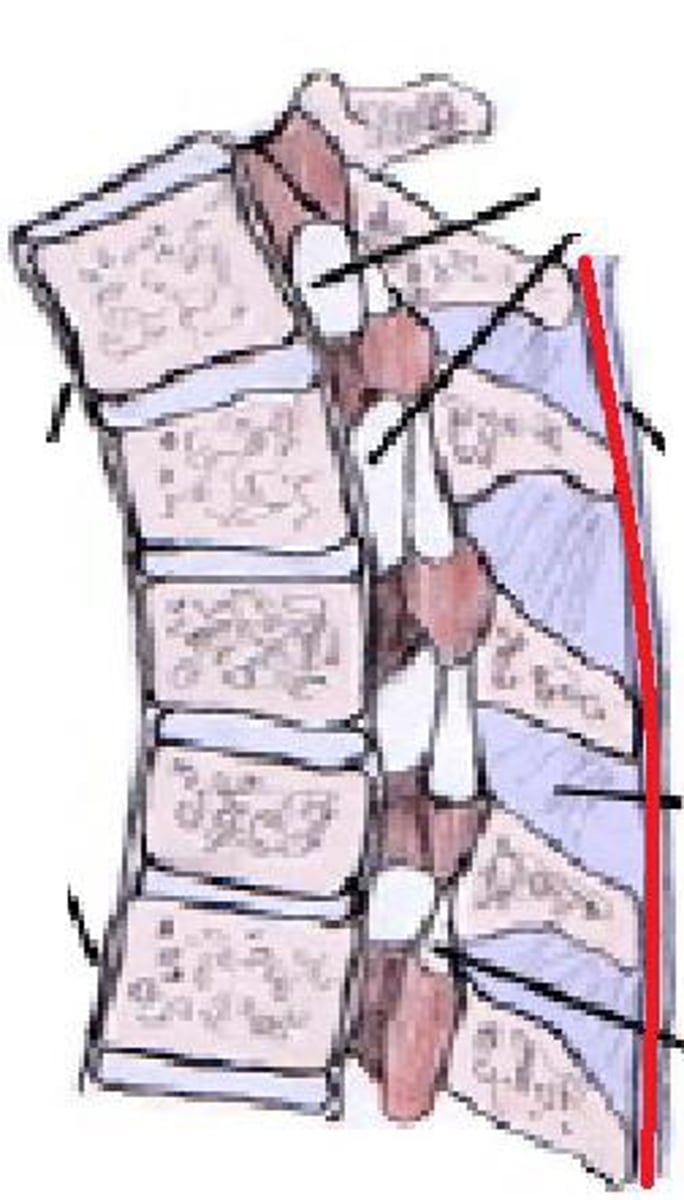
Ligamentum nuchae
As the supraspinous ligament extends passed the C7 vertebrae, it forms this triangular sheet like structure. It attaches superiiorly at the posterior aspect of the inferior skull and to the C7 spinous processes. The anterior border of the triangle connects with all of the cervical spinous processes. This ligament supports the head and resists unwanted movements, as well as muscle attachments.
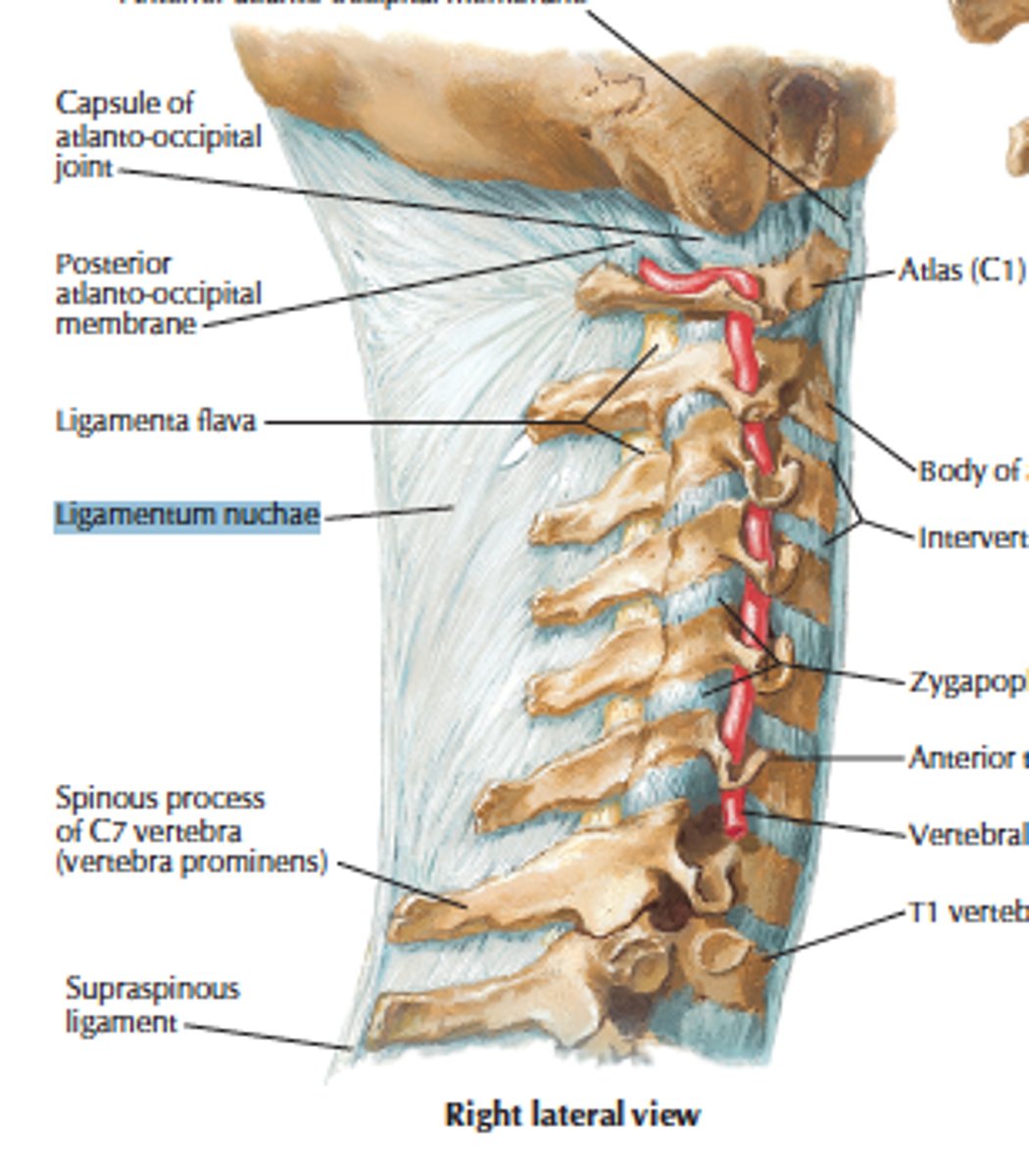
Cruciate ligament of atlas
This is an extension of the transverse ligament of the atlas in the atlantoaxial joint. It attaches superiorly to the occipital bone and inferiorly to the axis body. In the middle it attaches to the tranverse ligament, forming a cross structure. Hence the name cruciate, meaning cross.
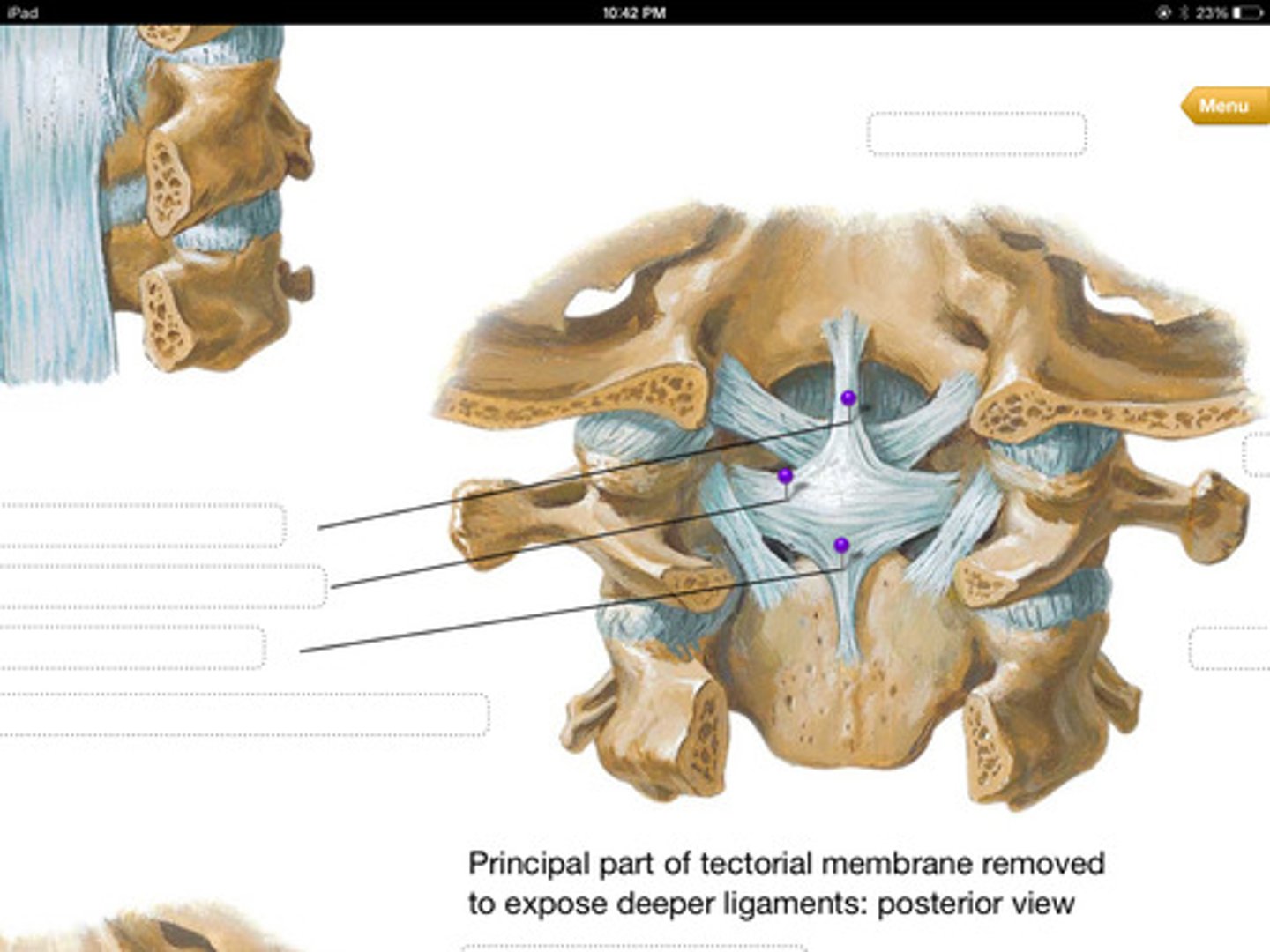
Transverse ligament of the atlas
This ligament surrounds the Dens prominence of the axis posteriorly against it's anterior articular surface. It spans from the lateral articular bodies of the atlas and keeps the Dens in place.
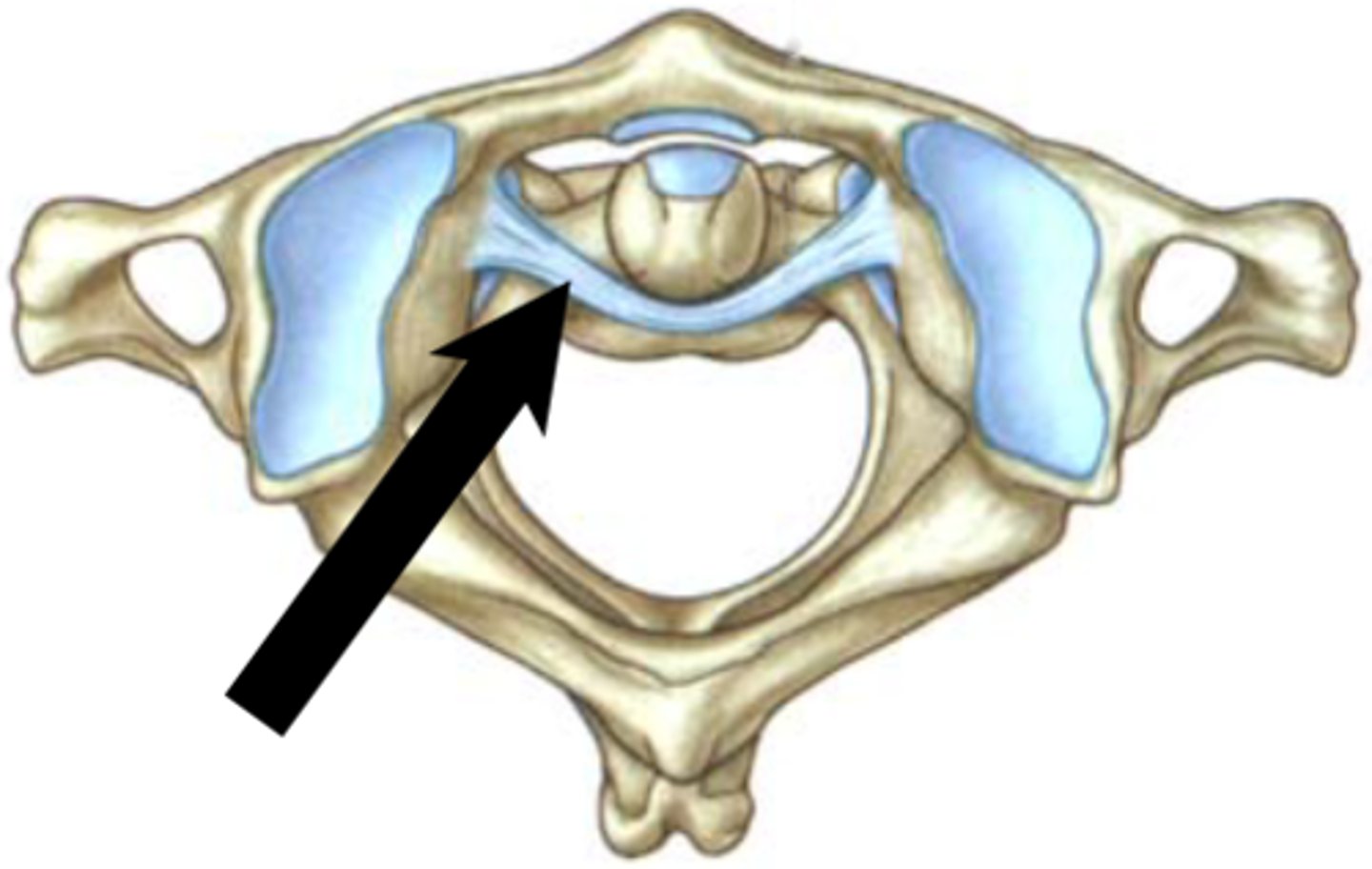
Intervertebral disc
These are fibrocatilagenous discs between the vertebral bodies. They consist of two parts the nucelus pulposus an the anulus fibrosus. These reduce friction between vertebrae.
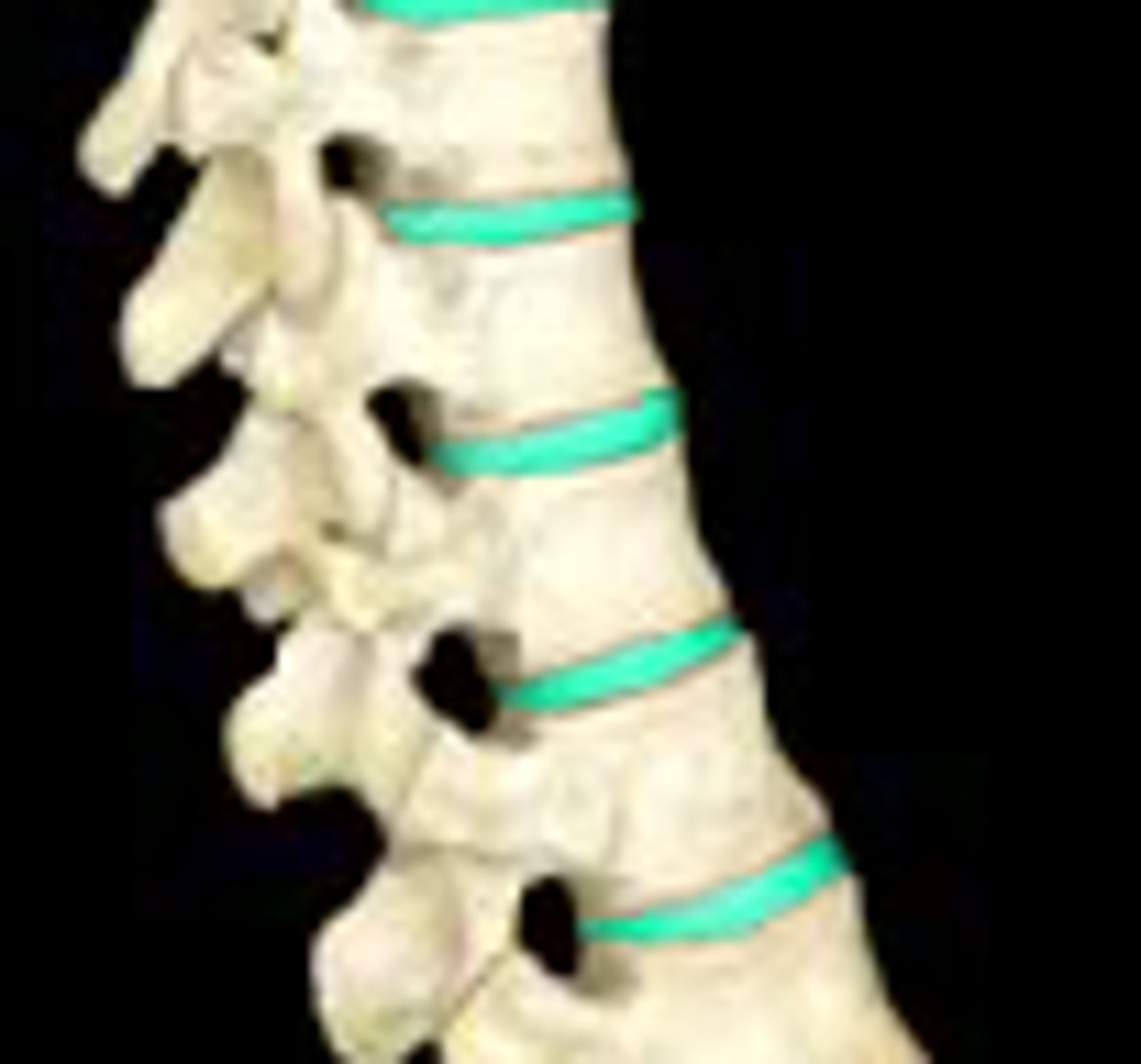
Nucleus pulposus
This is the inner part of the intervertebral disc and is a gel like consistency to resist compression between vertebrae.
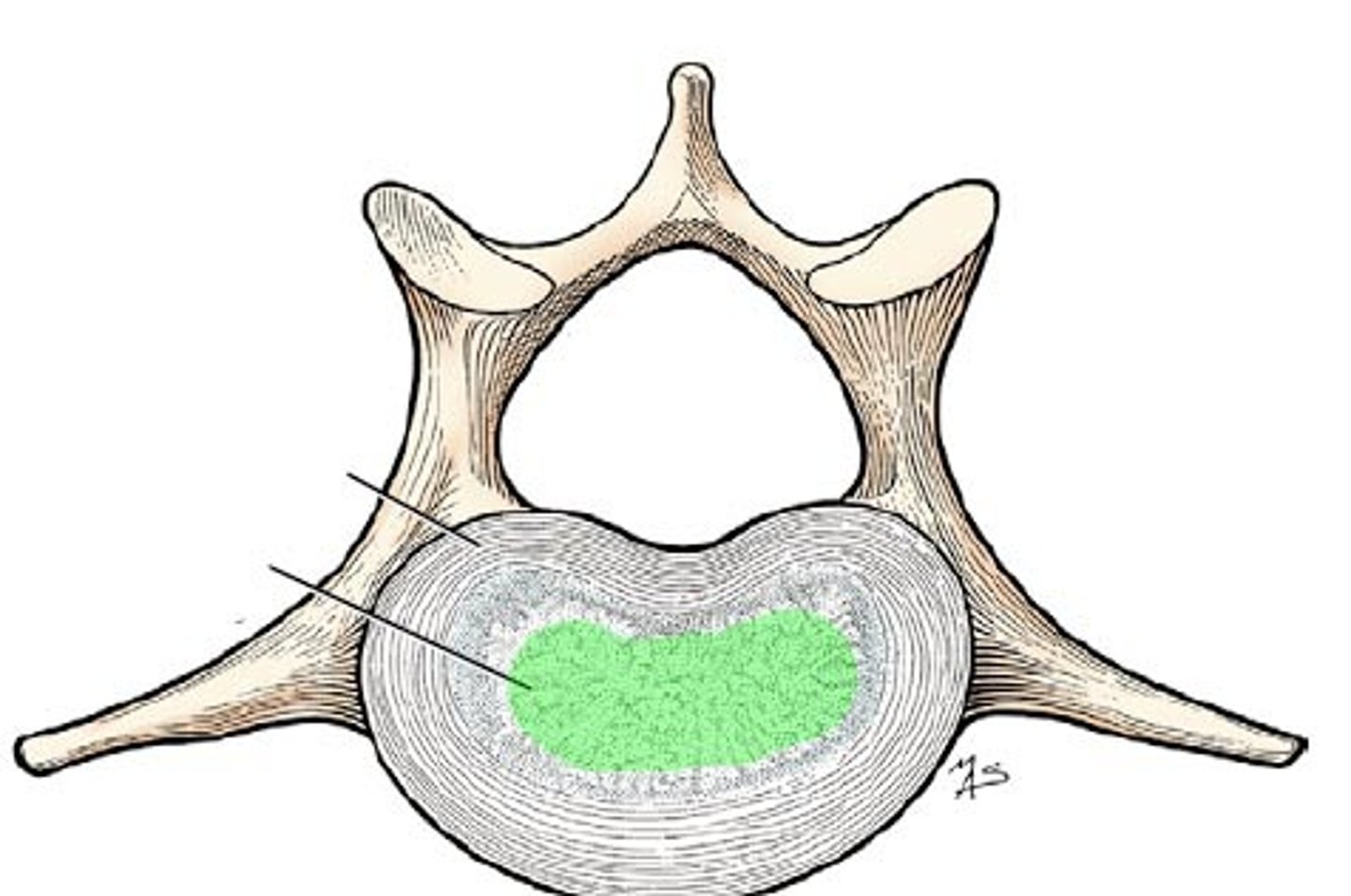
Anulus fibrosus
This is the outer most ring of the intervertebral disc, it consists of a fibrocartilage lamellar configuration. These limit rotation of the vertebral joint.
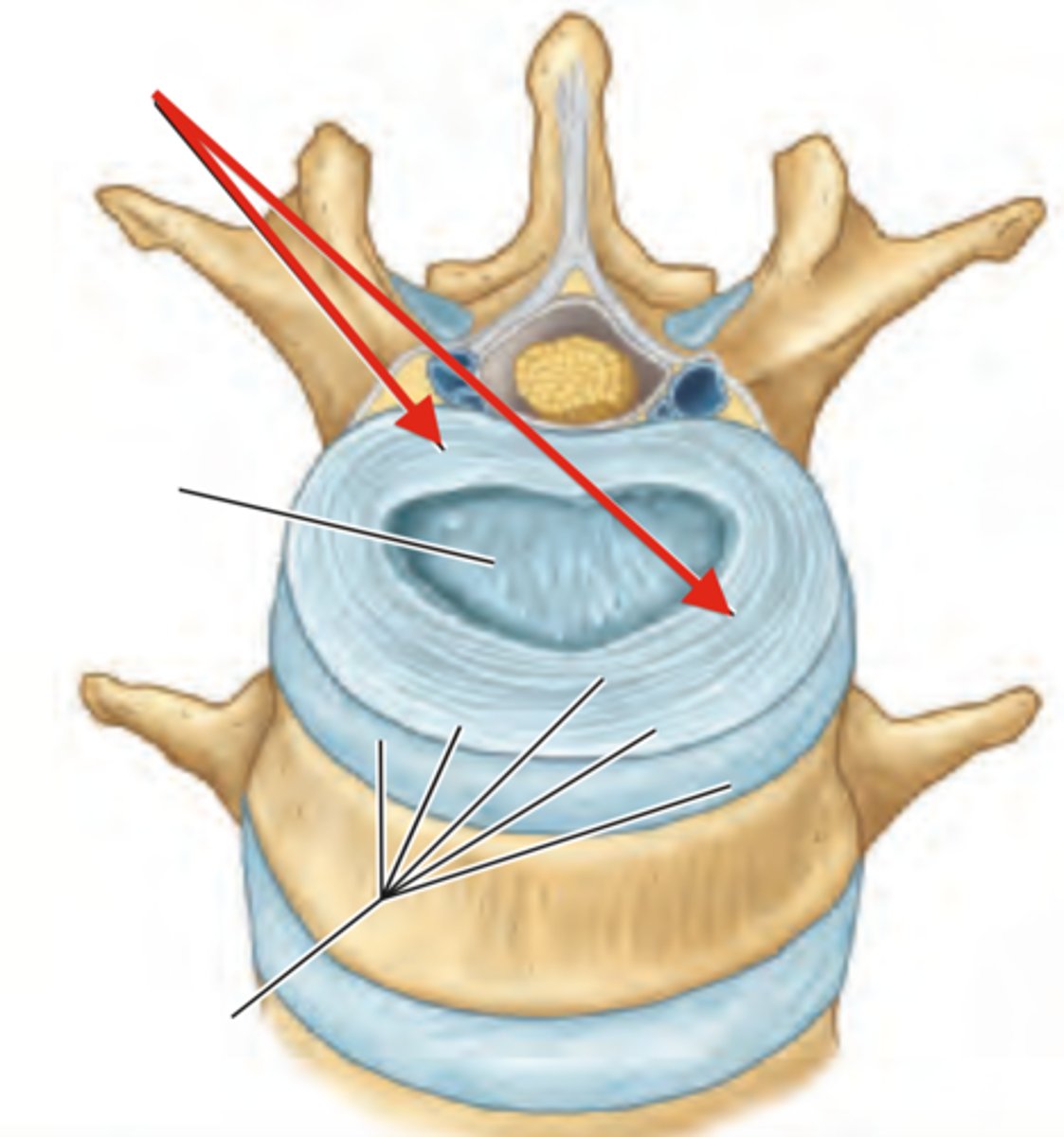
Atlanto occipital joint
This is the joint between the C1 Atlas vertebrae and the occipital bone of the skull. It allows flexion and extension of the head in the sagital plane.
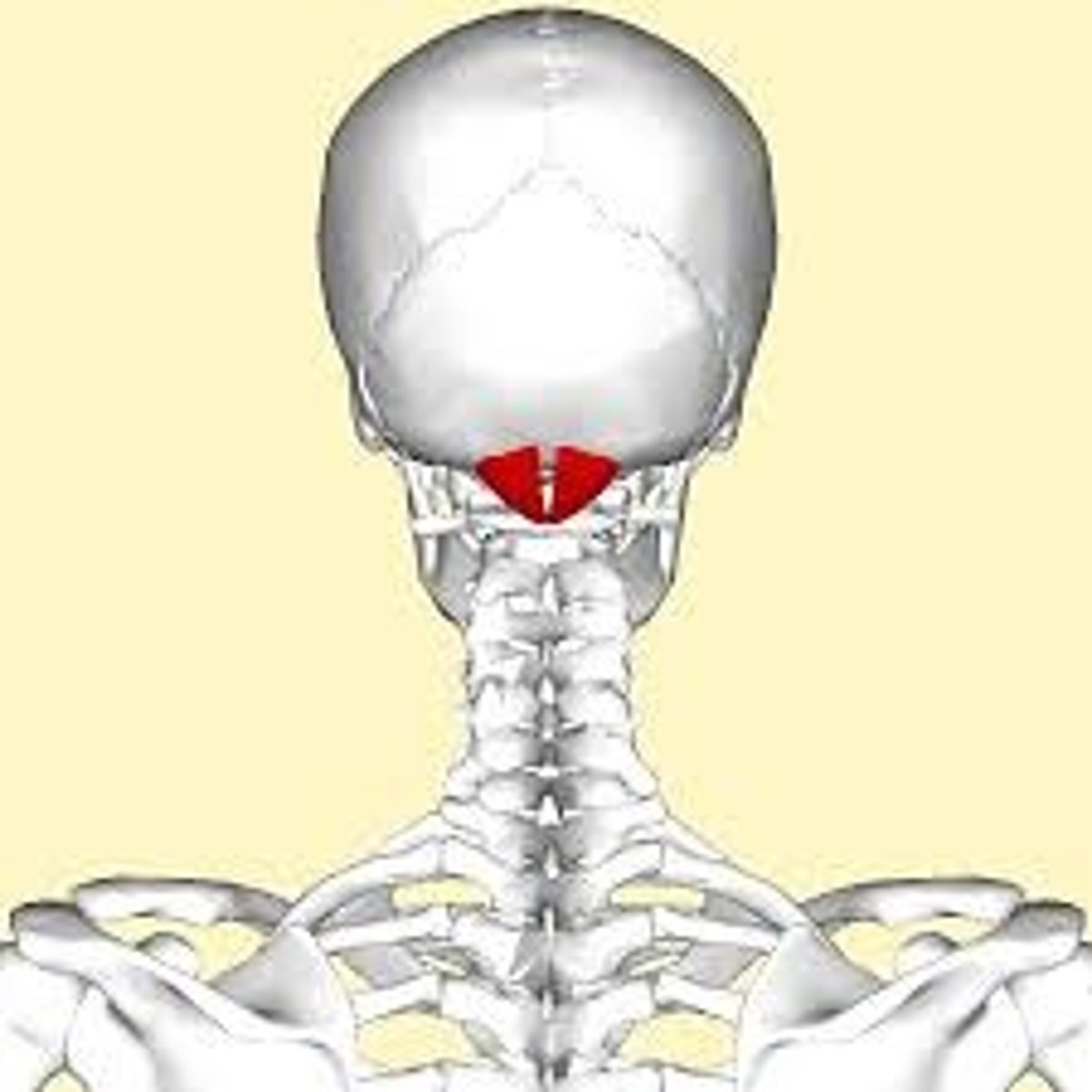
Atlantoaxial joint
This is the joint between the C1 and C2 vertebrae. It allows rotation of the head and C1 vertebrae.
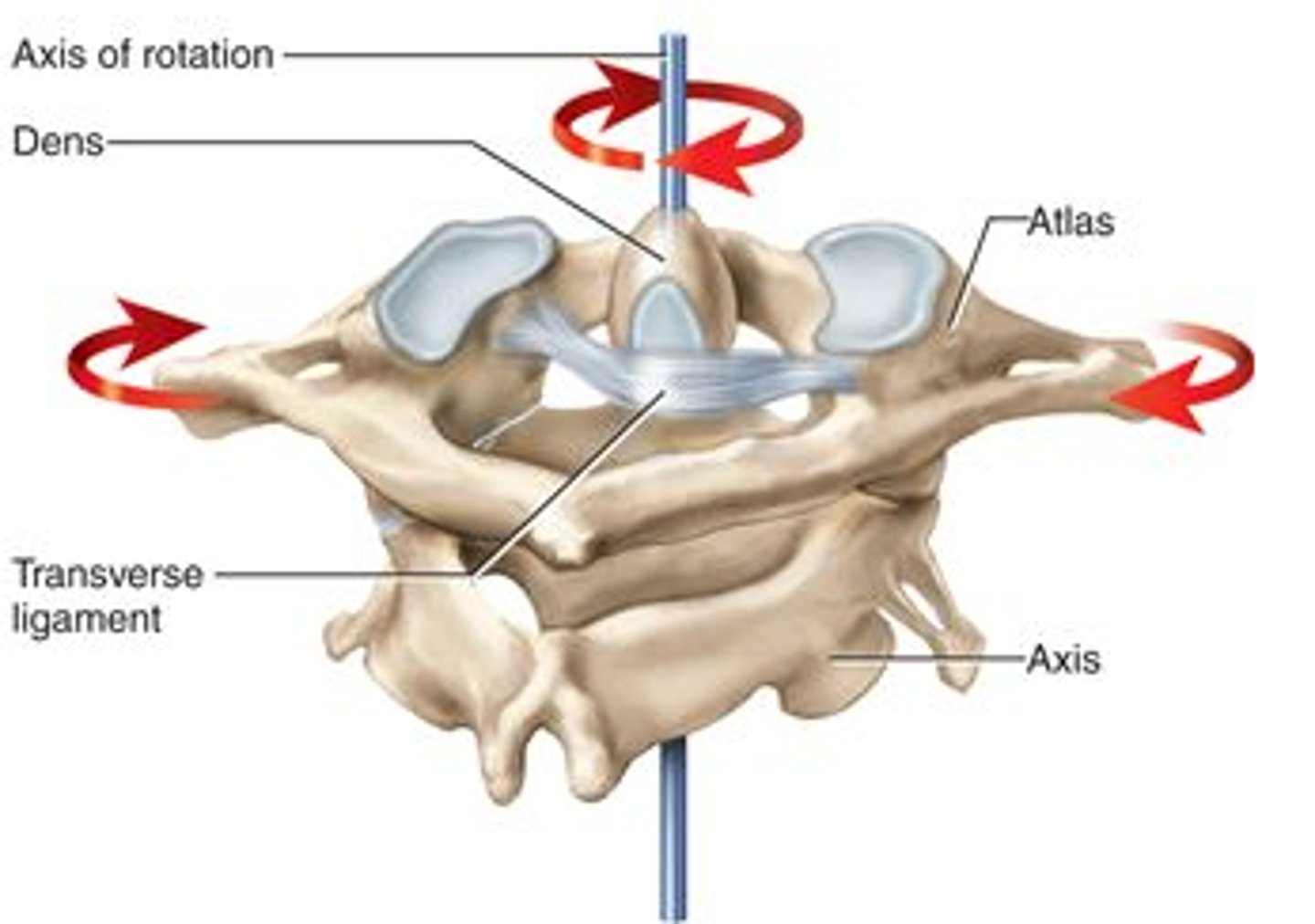
Costovertebral joints
These are joints that connect the body and transverse process of thoracic vertebrae to the thoracic cage. The heads of the ribs articulate with the bodies of the vertebrae, forming plane synovial joints. The transverse processes also articulate with the rib at a different position, supported by the costotransverse ligament.
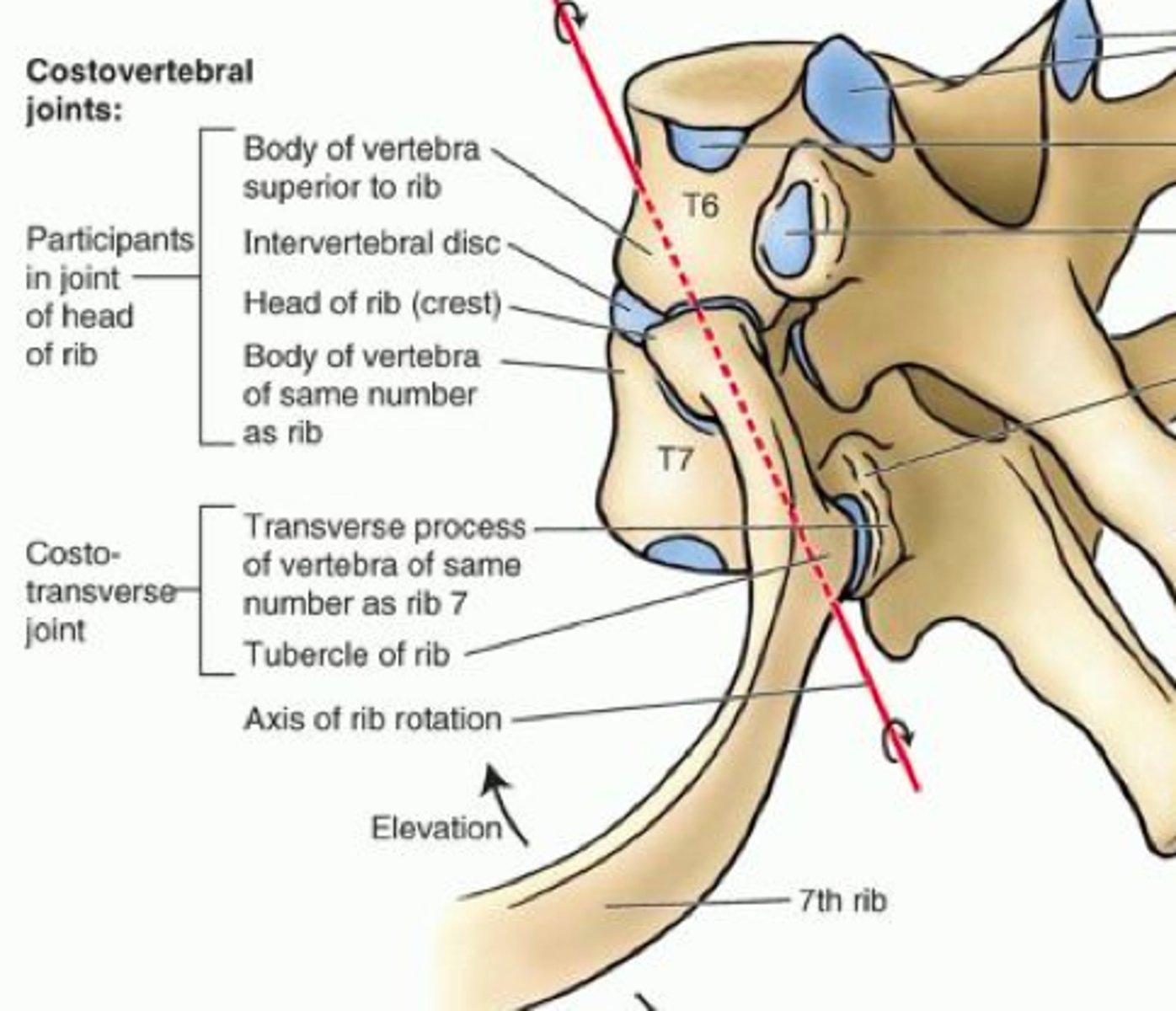
Cervical facet joints:
These are the joints between the superior and inferior articular processes of the cervical spine. They are on a anterior to posterior tilt, this facilitates flexion and extension of the cervical spine.
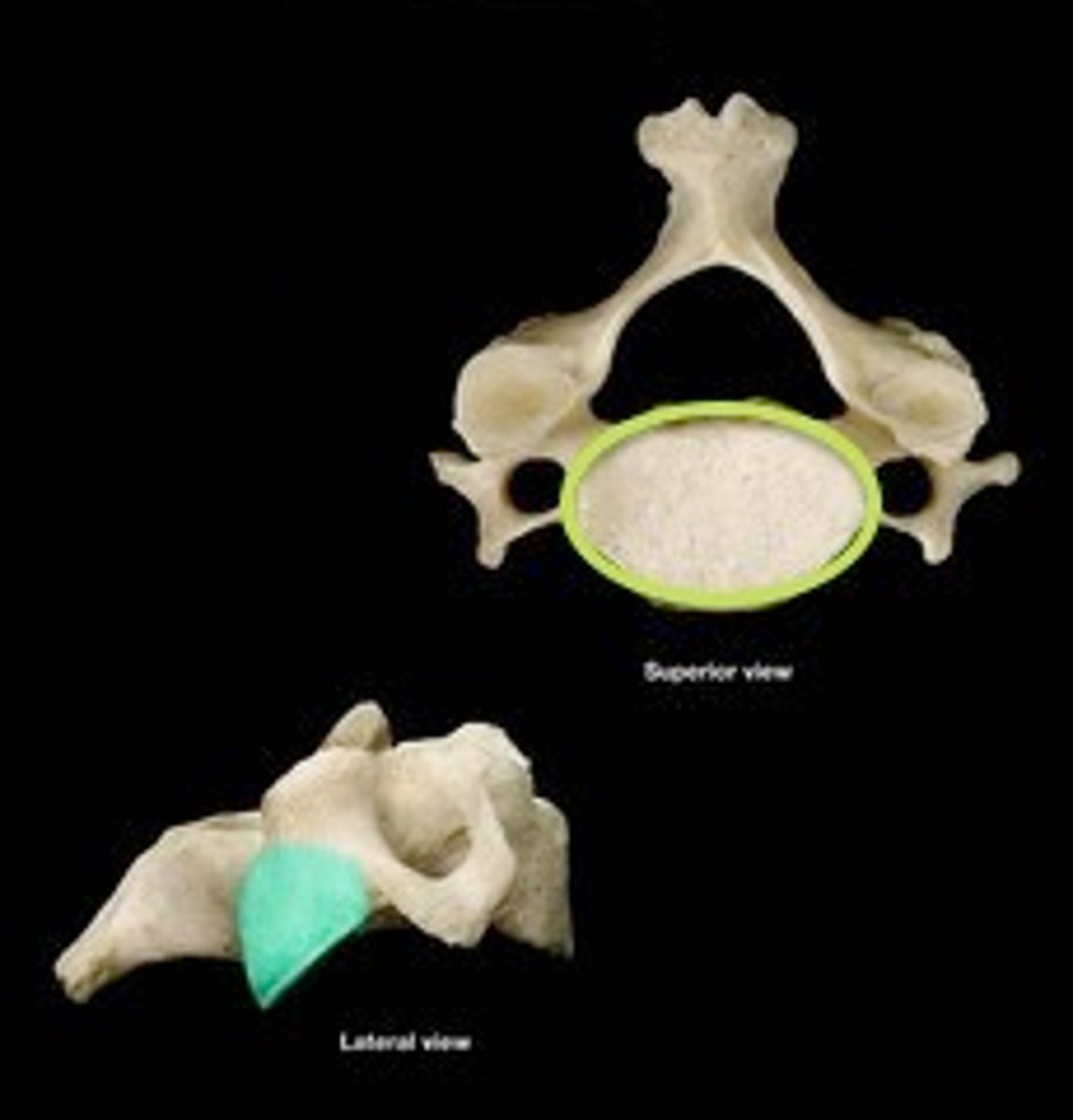
Thoracic facet joints
These are the joints between the superior and inferior articular processes of the thoracic vertebrae. They are in a vertical plane, this limits flexion and extension but facilitates rotation at the thorax.
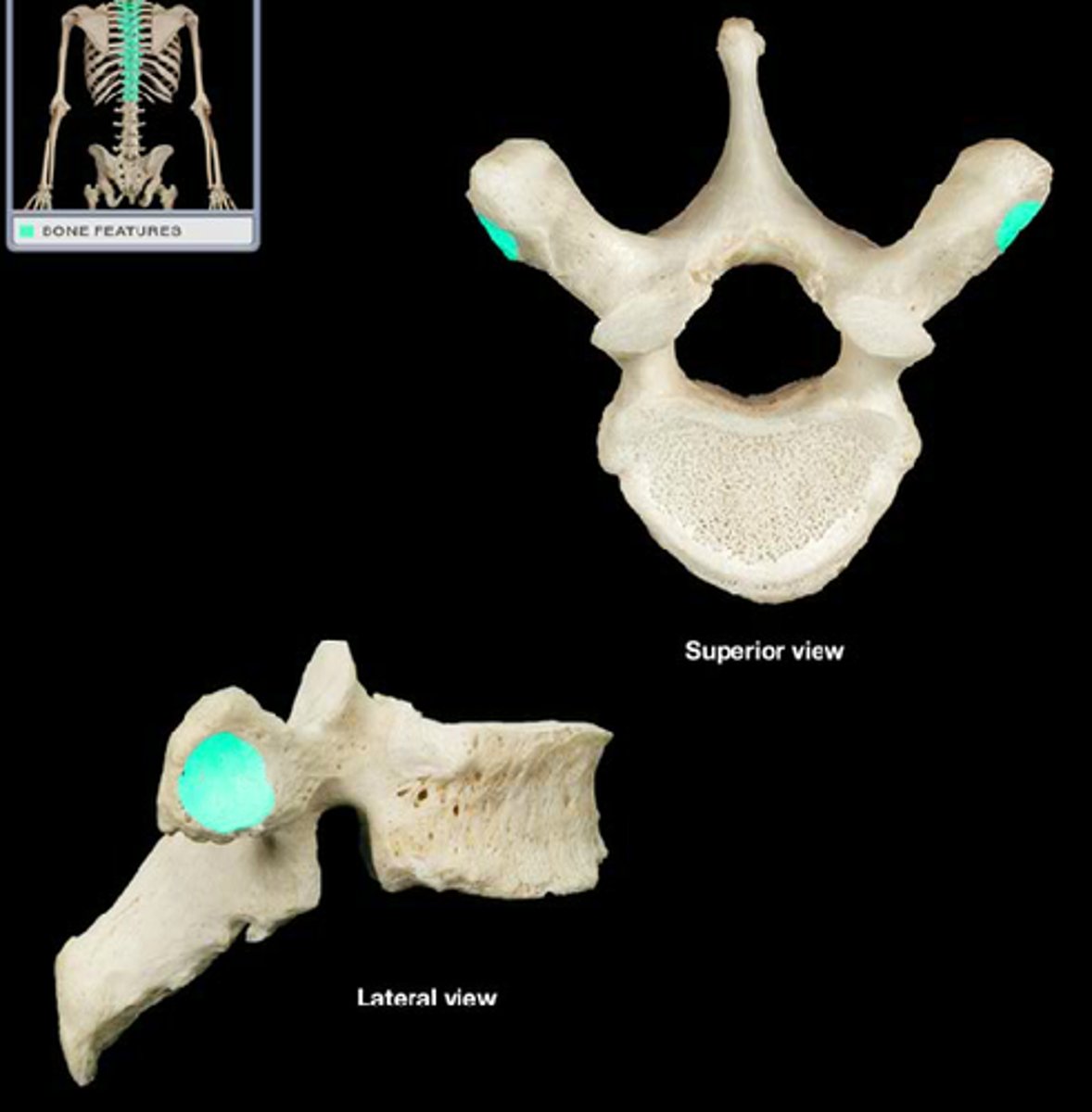
Lumbar facet joints
These are the joints between the superior and inferior articular processes of the lumbar vertebrae. They are vertical in the saggital plane and simulate a wrapping effect. This limits the majority of movement despite some flexion and extension being available in the lumbar region.
